TechRadar Verdict
The Asus TUF Gaming M4 Air’s biggest USP is its 50g ultra-lightweight body, which is the lowest we have seen on a gaming mouse so far. Thankfully, it also backs it up with a great all-round sensor, crispy switches and an extremely comfortable build.
Pros
- +
50g!
- +
Bacteria and water resistant
- +
Great gaming performance
- +
Paracord is nice
Cons
- -
No RGB
Why you can trust TechRadar
One minute review
The Asus TUF Gaming M4 Air’s muted looks won’t turn heads, but its ultra-lightweight design and solid sensor performance is where the heart of the device lies.
At just 50g, it is one of the lightest gaming mice we have tried (in both wired and wireless form), and its 16,000 DPI PixArt sensor, Kailh GM 4.0 switches, and a comfortable antibacterial design also makes it a true powerhouse.
For AED 179 (or USD 50), it may not undercut some of its more popular high-end competitors such as HyperX and Glorious, but it’s easily as feature-packed and certainly the lightest mice of the lot.
Design and Comfort
Asus has gone for a surprisingly muted design for the TUF Gaming M4 Air. For a company that loves to add edgy design lines and bold colours, the restraint shown here is quite impressive. However, the end result is a generally boring device. But it is at least functional with a solid-feeling matte construction and comfortable build.
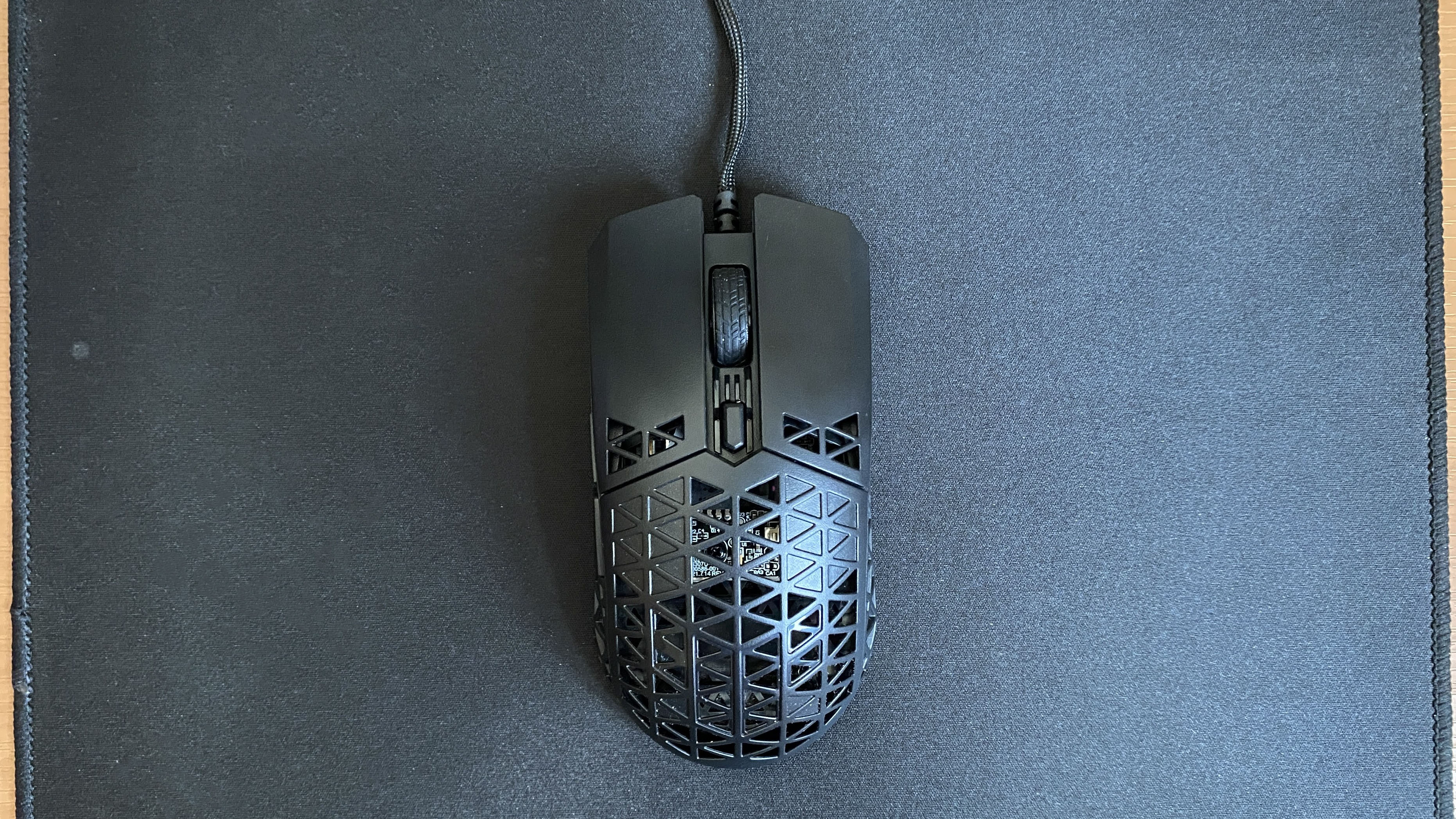
The M4 Air’s claim to fame is its ultra-lightweight body. Asus claims it weighs 47g but on our measuring scale it was around 50g (without the wire), but regardless it still remains one of the lightest gaming mice we have ever tried.
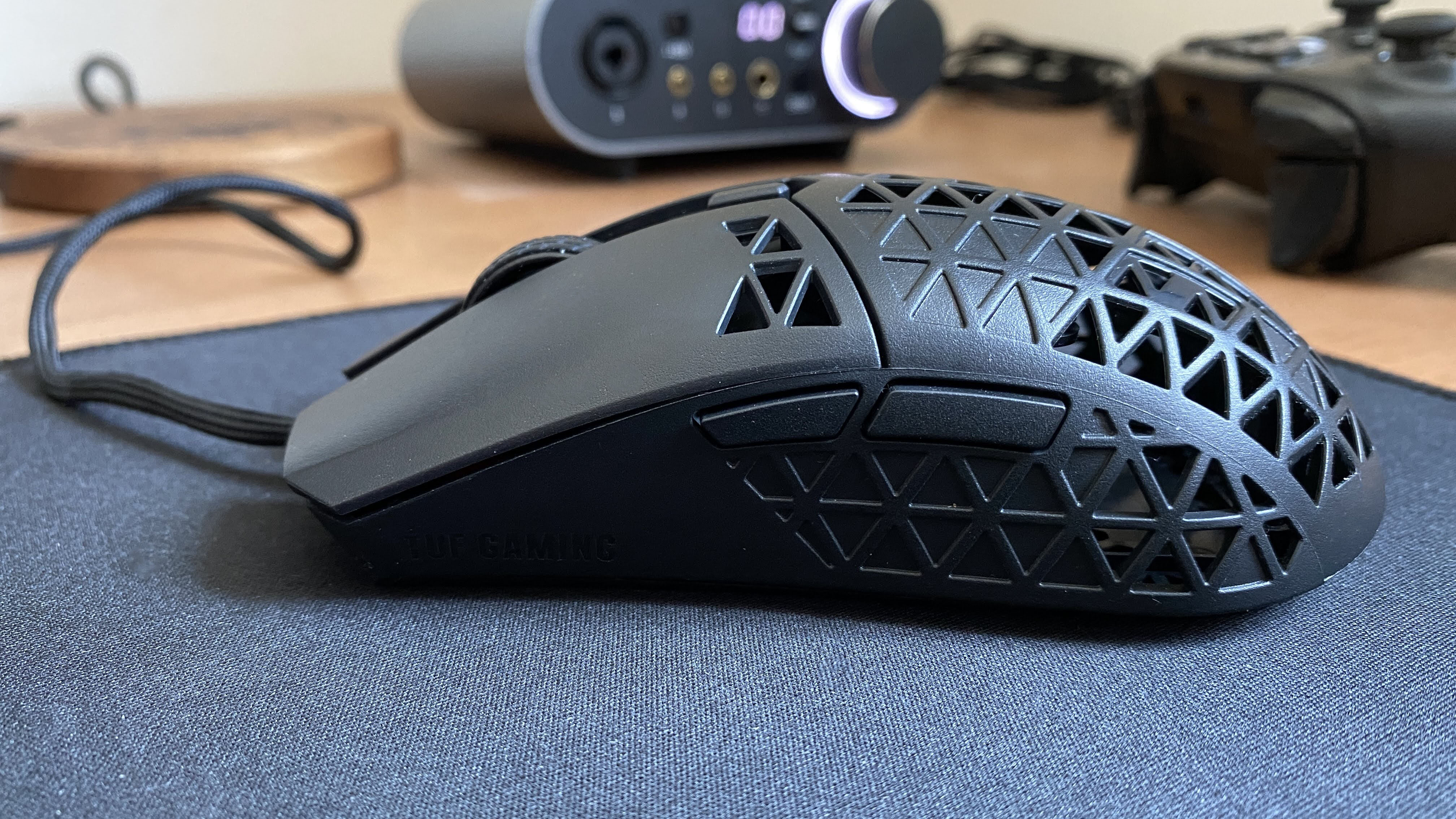
Generally when a mouse weighs so little, manufacturers start to shrink the overall size to reach the target on the measuring scale. Asus has held steadfast though, and has delivered a fully standard size mouse that’s 126mm long and 64mm wide. It doesn’t have a prominent bulge in the middle like our daily driver the Glorious Model D Wireless, so you will most likely be gripping the mouse with your ring and pinky finger without having much stability from your palm. But regardless of that, the M4 Air felt extremely comfortable and natural to use from the get go, and we would wager it should support most grip styles easily.
Another interesting bit about the design is the choice of ‘holes’ cut onto the body. Most mice opt for a punch hole design, but Asus has gone for a stacked triangular design that could potentially be a more pleasant solution for those that suffer from Trypophobia.
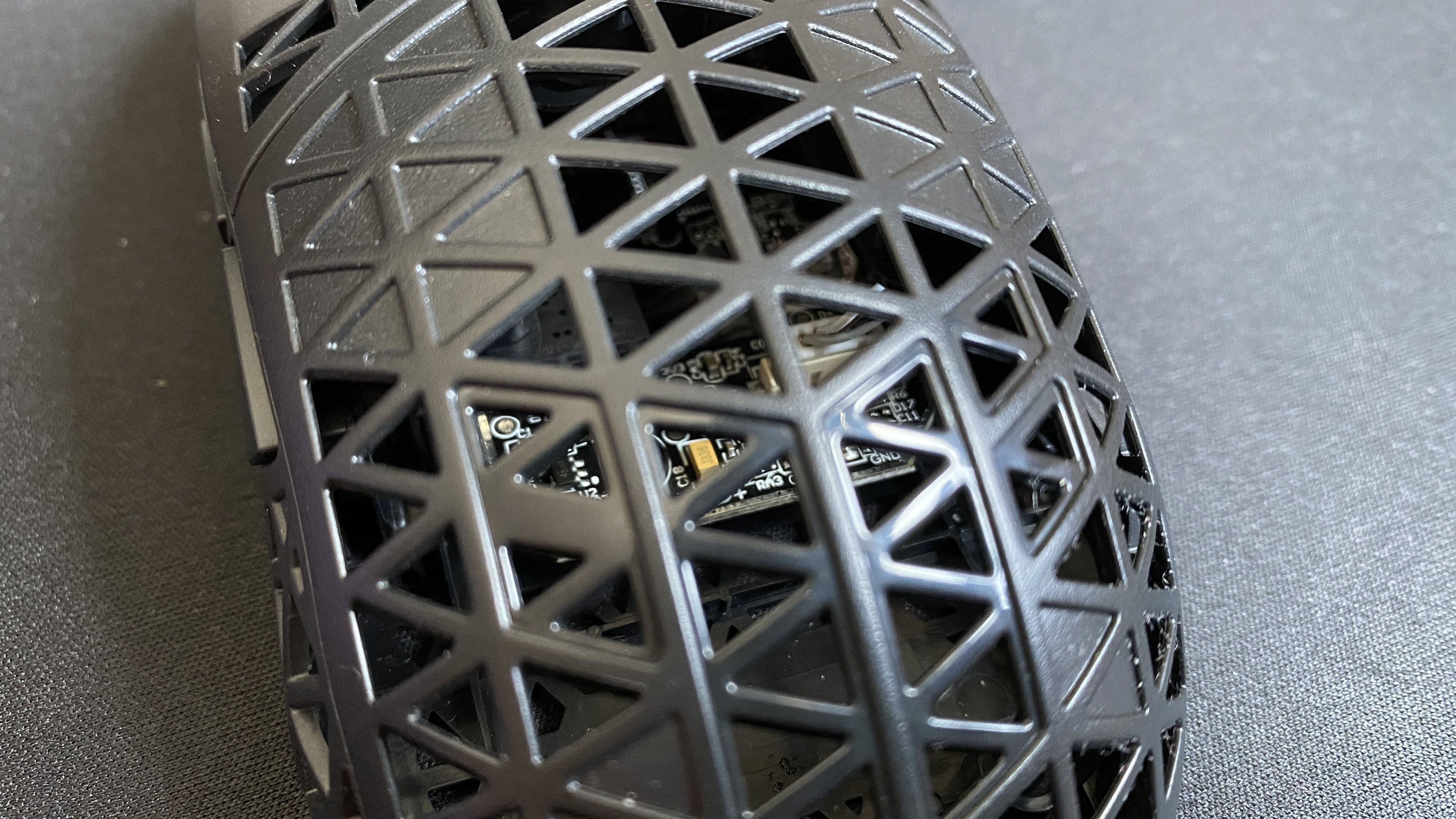
Since this is a TUF Gaming product, the device is bound to support some sort of protective feature about it. This time it's not ‘military grade’ components, but Asus’s new Antibacterial Guard, which promises to eliminate 99% of bacteria over a 24-hour period. It also has IPX6 water resistance for accidental spills, which is a fine addition not only for those that like to snack during gaming, but also because the outer shell would barely protect the clearly visible innards of the mouse otherwise.
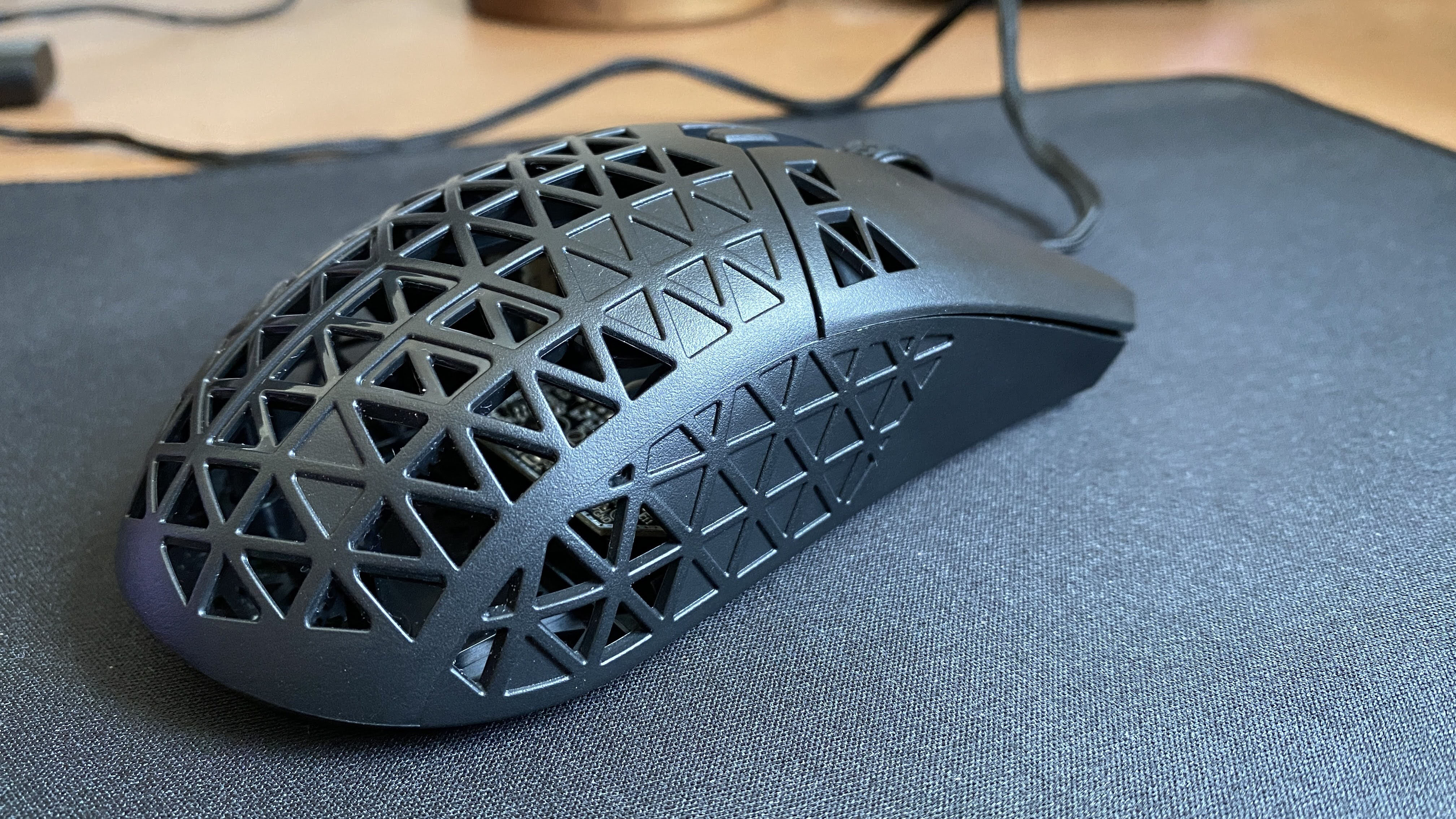
We are sure that you have already noticed that the M4 Air is devoid of any LEDs. There is no RGB bling to be found here, not even a tiny LED to notify of the currently selected DPI profile. Asus has opted to shed as much weight as possible with the device, but we would be remiss not to say that a small LED light would have benefited the device a little bit. It’s no fun to second guess which DPI level you are on during an online match, and while Asus compensates that by having an on-screen menu flash the DPI setting, it’s too slow to activate.
The M4 Air has six programmable buttons, including the DPI button wedged in the middle of the device. The floor of the mouse is covered with Standard PTFE feet, which ran pretty smoothly on most surfaces we tried. There is also PTFE padding around the sensor too - a first we have seen on a mouse - but we are not sure if it actually benefits with the accuracy in any way.
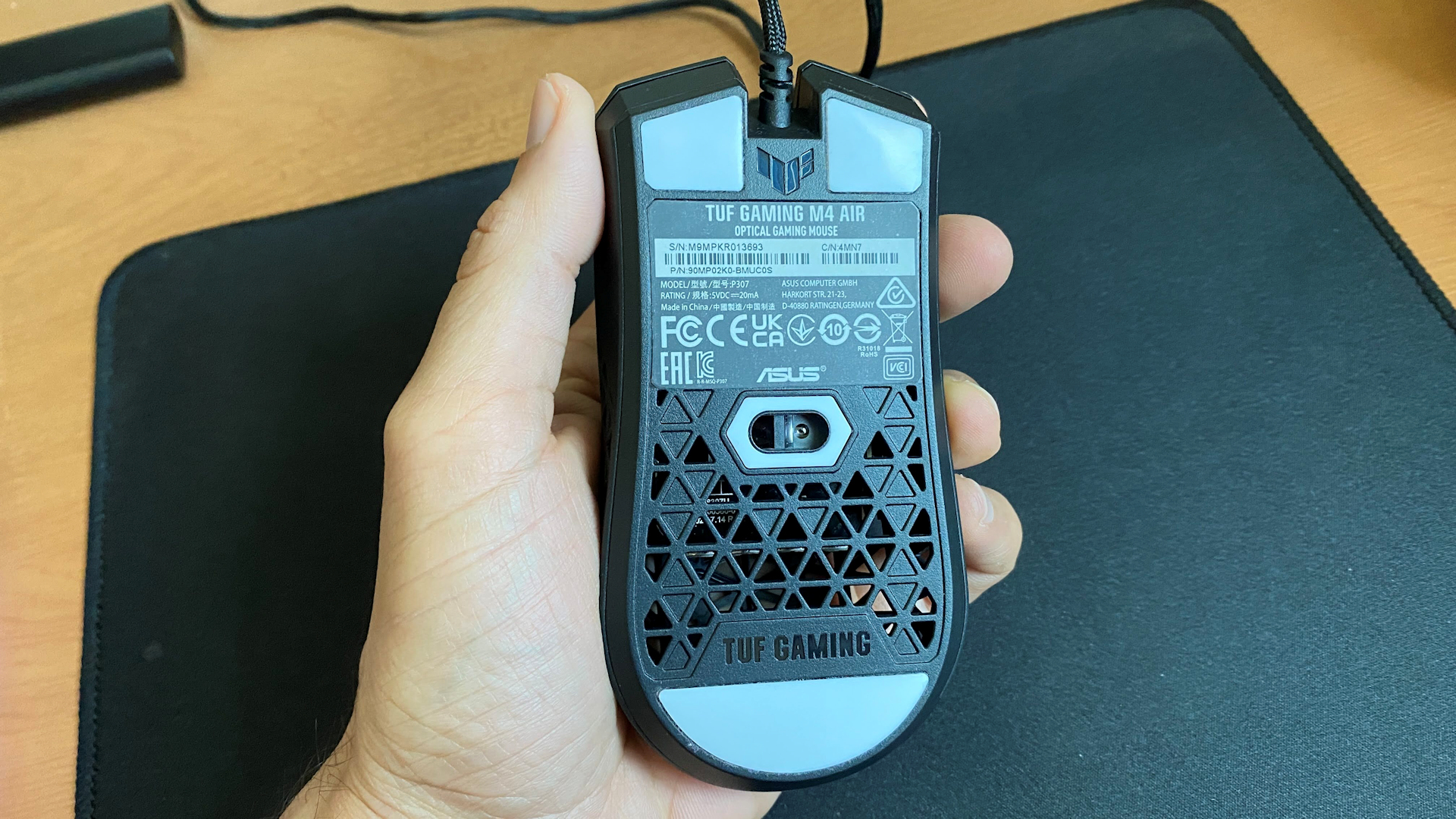
Software and Performance
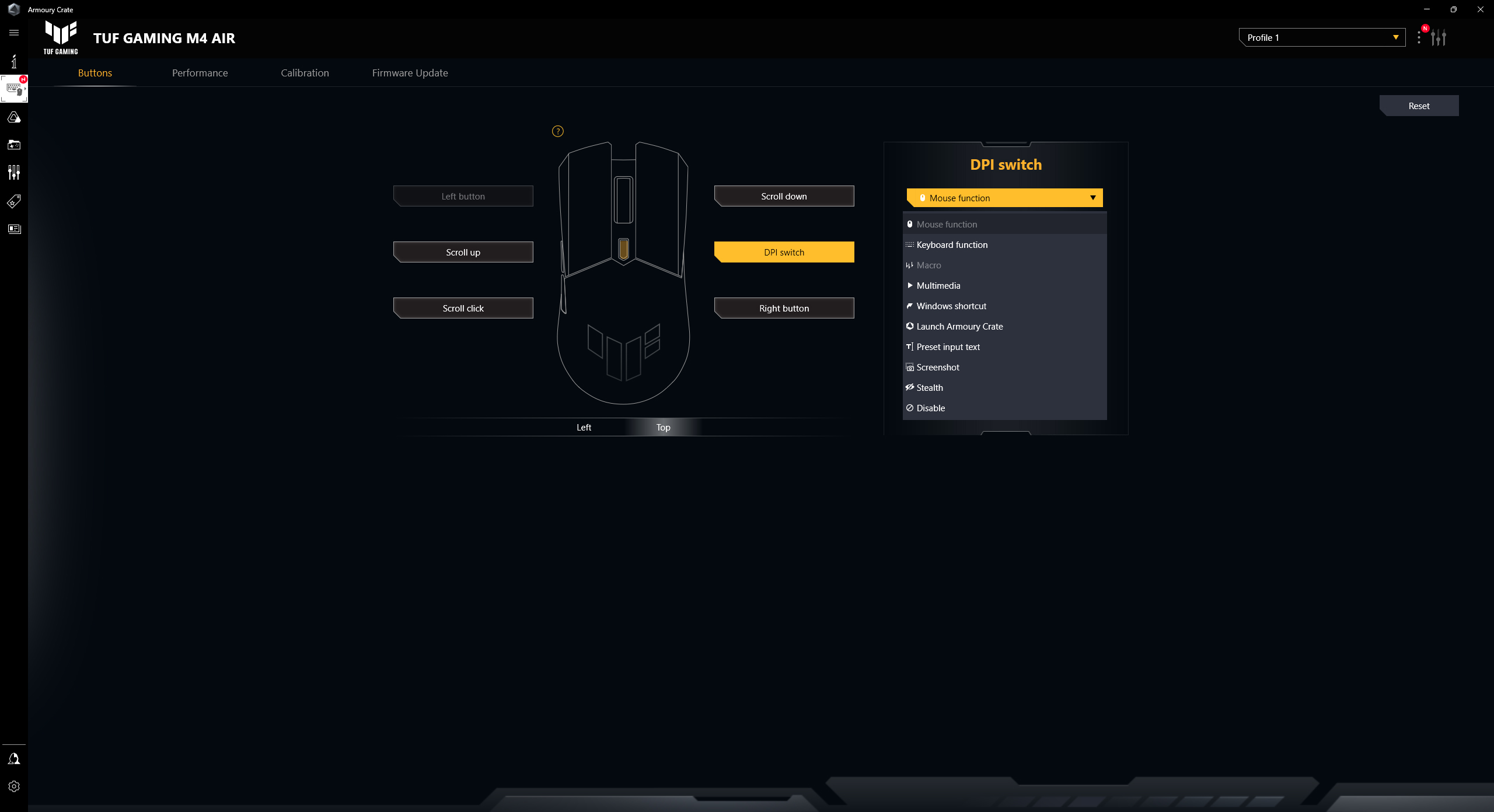



The Asus Armoury Crate software is a required install if you want to tinker around with the mouse’s default configuration. Here you can create upto 3 profiles, remap any of the six buttons, adjust four DPI levels and the polling rate (1000Hz being the max), and set the angle snapping. Under the ‘Calibration’ tab, you can switch between low or high lift-off distance, and that’s about it. There is a firmware update when you plug the mouse for the first time, so be sure to quickly download the latest version (so far, we encountered no issue with the v1.00.03 firmware).
In terms of performance, the M4 Air uses the PixArt 3335 sensor, which may not be the best one of the lot currently, but it still remains extremely competent in getting the job done. We ran the mouse through a few matches of Halo Infinite, and we had no trouble tracking our shots and picking off heads with the S7 Sniper Rifle. The powerful sensor coupled with the lightweight body made it easy for us to flick and move the mouse around, but I wouldn't necessarily say that it made us a better player. Our overall accuracy in the game remained at the usual 45-56%, which is the best it can get.
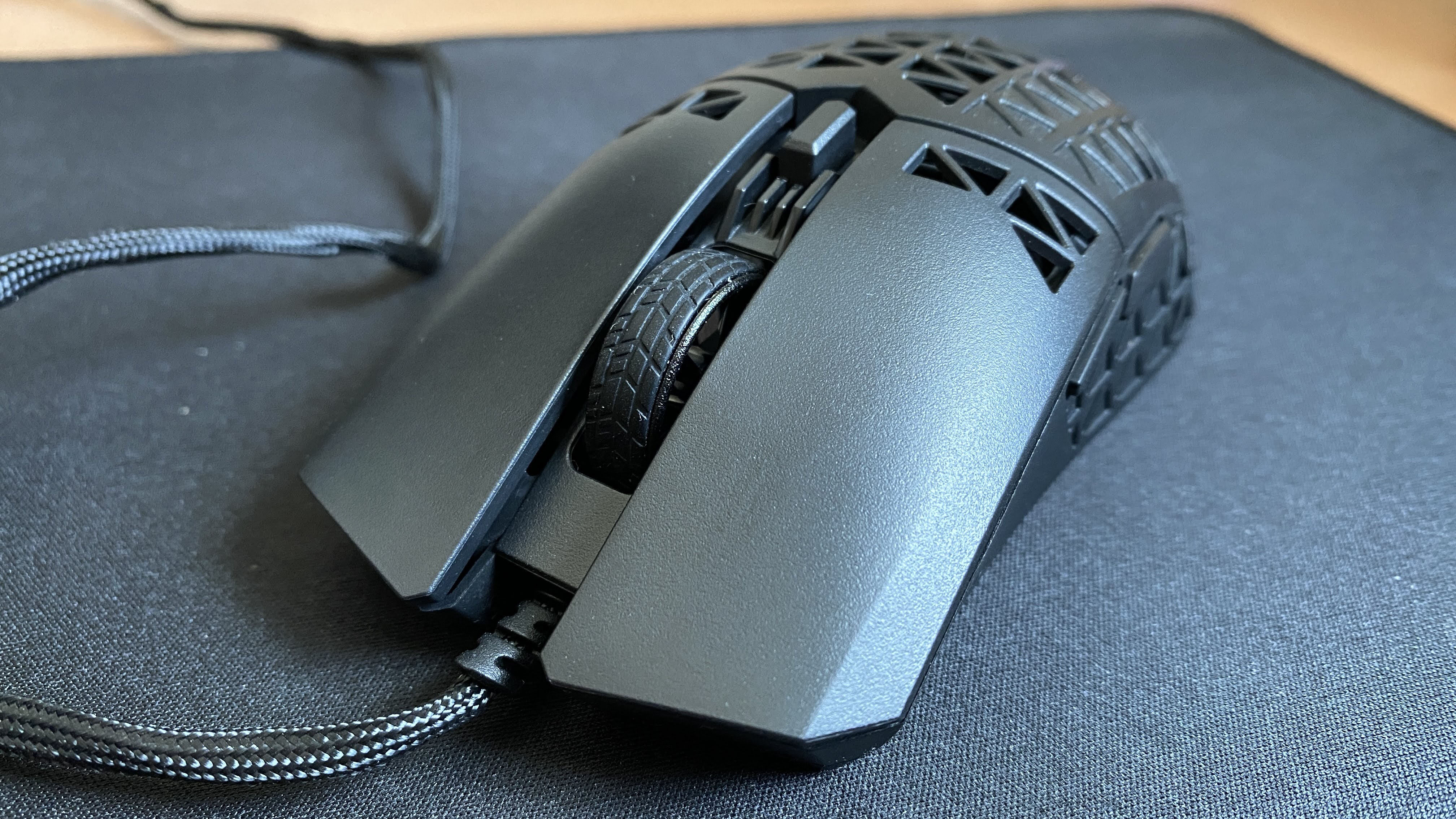
The Kailh GM 4.0 switches feel nice and crispy. They do not have any pre or post travel, so every click feels snappy and responsive (even though they are a tad bit heavy to press compared to other switches we have tried). They are rated for 60m clicks which should be plenty for an average life of a gaming mouse.
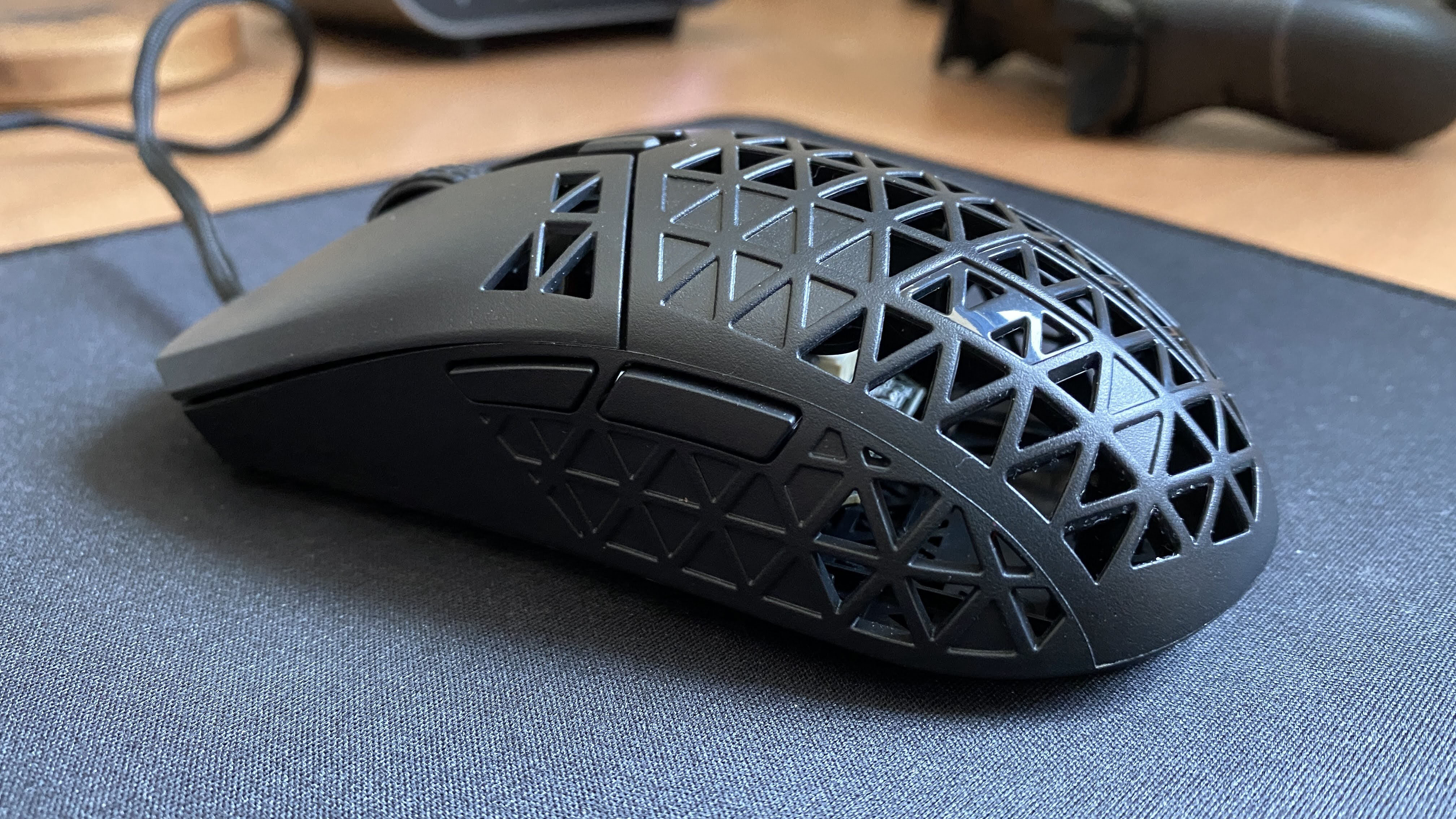
The side buttons are slim and positioned well for quick thumb manoeuvring. They too have a crisp noise profile to them and are easy to reach while gaming, or when simply browsing the web. The slim profile means that they usually get out of the way when swinging the mouse around, and we have never accidentally triggered the buttons while doing so.
Being tethered to a wire after using the Glorious Model D Wireless for the past couple of months required some getting used to, but Asus’s Paracord cable admittedly made the process far easier. The cable is covered in soft cloth-like material and has decent flexibility to minimise snagging. While it wasn’t exactly a ‘wireless-like experience’ as it says on the box, it came close to that once we adjusted the wire to our liking.
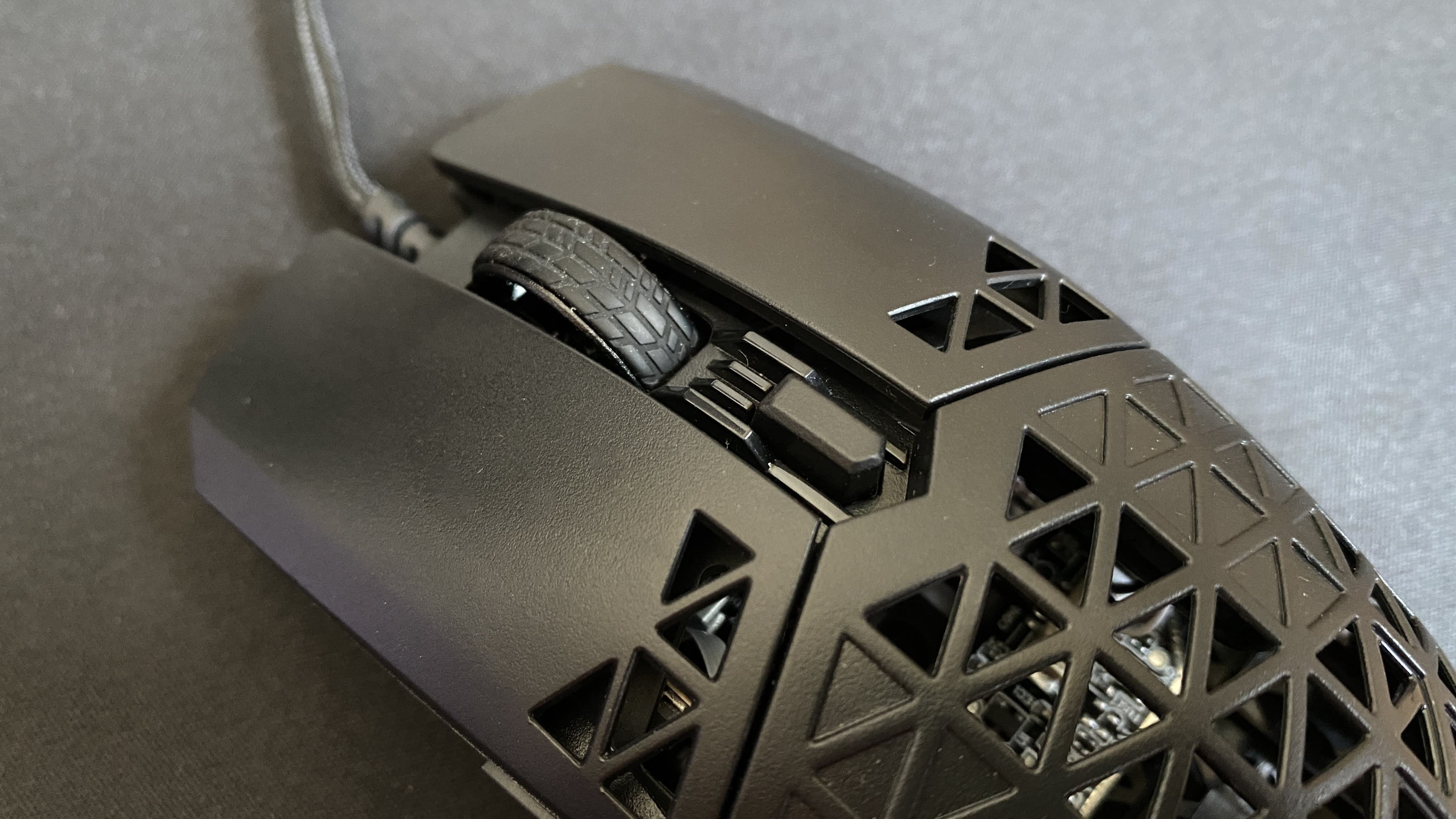
The scroll wheel is a bit on the softer side. It has notable steps but they feel kind of mushy, and you really have to pay attention to the scrolling sensation to feel the tiny steps. If your gaming style is reliant on having prominent scroll wheel steps, the M4 Air won’t quite cut it here.
Buy it if…
You want a seriously lightweight mouse
The M4 Air weighs just 50g, which is the lightest gaming mouse we have ever tried.
You want a mouse that will last
With Antibacterial Guard and IPX6 water resistance, the M4 Air is built to sustain some damage over long periods of time.
You want affordable and powerful gaming mouse
For $50, the M4 Air delivers incredible gaming performance, and an extremely comfortable build for an affordable price.
Don’t buy it if...
You want RGB bling
There are no LED lights to be found on this device - not even for the DPI level. So if you want a snazzy looking device to match with the rest of your setup, the M4 Air won’t be joining that party.
Mufaddal Fakhruddin is an experienced Editor with a demonstrated history of working in the computer games industry. He is skilled in social media, video idea creation and production, media relations, and journalism.
